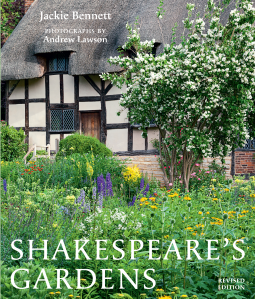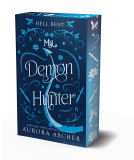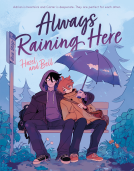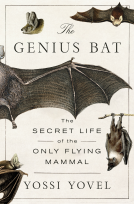
Shakespeare's Gardens
by Jackie Bennett;
This title was previously available on NetGalley and is now archived.
Send NetGalley books directly to your Kindle or Kindle app
1
To read on a Kindle or Kindle app, please add kindle@netgalley.com as an approved email address to receive files in your Amazon account. Click here for step-by-step instructions.
2
Also find your Kindle email address within your Amazon account, and enter it here.
Pub Date May 11 2021 | Archive Date May 24 2021
Quarto Publishing Group – White Lion | Frances Lincoln
Talking about this book? Use #ShakespearesGardens #NetGalley. More hashtag tips!
Description
Shakespeare's Gardens is a highly illustrated, informative book about the gardens that William Shakespeare knew as a boy and tended as a man, published to coincide with the 400th anniversary of Shakespeare's death in April 2016. This anniversary will be the focus of literary celebration of the man's life and work throughout the English speaking world and beyond. The book will focus on the gardens that Shakespeare knew, including the five gardens in Stratford upon Avon in which he gardened and explored. From his birthplace in Henley Street, to his childhood playground at Mary Arden's Farm, to his courting days at Anne Hathaway's Cottage and his final home at New Place - where he created a garden to reflect his fame and wealth. Cared for by the Shakespeare Birthplace Trust, these gardens are continually evolving to reflect our ongoing knowledge of his life. The book will also explore the plants that Shakespeare knew and wrote about in 17th century England: their use in his work and the meanings that his audiences would have picked up on - including mulberries, roses, daffodils, pansies, herbs and a host of other flowers. More than four centuries after the playwright lived, whenever we think of thyme, violets or roses, we more often than not still remember a quote from the 39 plays and 154 sonnets written by him.
Available Editions
| EDITION | Other Format |
| ISBN | 9780711256989 |
| PRICE | $40.00 (USD) |
| PAGES | 192 |
Featured Reviews
 Reviewer 677700
Reviewer 677700
This is a lovely, visually appealing book about the gardens that Shakespeare is said to have explored, the inspirations behind some of his work in this regard. As the blurb states, "More than four centuries after the playwright lived, whenever we think of thyme, violets or roses, we more often than not still remember a quote from the 39 plays and 154 sonnets written by him." I think that this sums up the impact of Shakespeare on literary culture quite well. At the same time, his influence has translated into the upkeep of memorials and sites of interest, like the gardens shown here. I am delighted to say that this book is quite interesting and visually beautiful. I would suggest it to gardening fans as well as those who are Shakespeare enthusiasts.
 Brandi R, Reviewer
Brandi R, Reviewer
I can smell the sweetness and feel the warmth on my face. I want a bench in any one of these beautiful gardens. The images are vivid, luscious and breathtaking. So much color to soak up in one place. I enjoyed the historical notes and learning more about Shakespeare in the process. The inclusion of verses from his sonnets with images of the particular herb or flower was a delight as well. I received a copy from the publisher and all opinions expressed are my own, freely given.
 John L, Reviewer
John L, Reviewer
Freshened up for 2021, I can see this being a quite compelling gift book bought for plant-lovers from many Shakespeare locales across Stratford and beyond. We start with a scattering of the royal parks and gardens Shakespeare would have known, once he reached society and got to act in front of whoever was on the throne, which would normally have been on an appropriate space in their own grounds. From there we zone in on Stratford, and get the history of the grounds on Henley Street that surround his birthplace, before Mary Arden's Farm, New Place and the rest get the same highly pictorial look. Elsewhere, box-out styled interruptions focus on specifics – garden herbs and their uses in the writer's time, roses, daffodils, etc. Throughout the photographic qualities are to the fore, with attractive shots across a variety of seasons adding to historical sketches and close-ups of relevant growth. Suitably balancing the interest of someone versed in Shakespeare with a hobbyist gardener and perhaps someone keen on learning historical garden trends and methods, such as how the working farmland became the prettier if not wholly practical cottage garden, this does a lot of things and does them all well.
A wonderful look into Shakespeare's Gardens! Filled with gorgeous photos and facts, this was such an interesting read! Definitely a fun read for anyone interested in gardens or Shakespeare!
Shakespeare’s Gardens is such a visually appealing book! I loved the many photos and their evocation of places and other times. I also like that this title examines different places in Shakespeare’s life, not just the well known Anne Hathaway’s cottage. There are chapters on Tudor Gardens, Shakespeare’s birth place, Mary Arden’s farm, Hall Croft and more in addition to the home of Anne. There is a lot to learn in a book that seems like a nice accompaniment for fans of Hamnet, among others.
The author points out that Shakespeare not only lived during exciting historical times but also in a time of richness for gardens with imports from Peru, Mexico and Asia, for example. The appearance in Shakespeare’s plays of common garden elements and the flowers of his time is also noted in the helpful introduction. The book goes on to be very informative and interesting. I recommend it.
Many thanks to NetGalley and the publisher for this title. All opinions are my own.
 Courtney H, Librarian
Courtney H, Librarian
While at first glance this may seem like a coffee table book of photographs, the book is actually a well-researched history of the lands Shakespeare would have lived on, visited, and been inspired by. The book covers the history of each location as well as what the area looks like today.
Shakespearean scholars will learn more about the lines in his plays that come from the land, as these are often references to historical practices that are unfamiliar today.
Recommended for history buffs who want to know more about Shakespeare's world or flora in Tudor England.
Originally published March 3, 2016, this book is a biography using gardens that Shakespeare was very familiar with at different times in his life. It’s just bursting with beautifully done photos and information on the bard and many of the flowers and plants that he often worked into his writings. It’s a great look at the various types of gardens that were around in Shakespeare’s time, and how they’ve evolved. This is put together for the 400th anniversary of Shakespeare’s death for those that are interested in him and gardening. Advance electronic review copy was provided by NetGalley, author Jackie Bennett, and the publisher.
 Darlene M, Reviewer
Darlene M, Reviewer
I received this book from the publisher through Netgalley for review and all thoughts and opinions are my own.
What an extraordinary book! Delightfully illustrated with botanical plates, garden illustrations and bright photography; this is book is highly informative and lovely to look through. This will be a fine collectors book for Shakespeare and Tudor readers. Highly recommend to libraries and aficionados alike.
 Reviewer 700590
Reviewer 700590
Shakespeare’s Gardens is a meticulously researched, beautifully written book with stunning pictures of the gardens discussed. The text is fascinating and covers historical perspectives and uses of gardens of the period, history of Shakespeare’s family members, contemporaries and other figures within the time frame. This is a fascinating read and one that will be enjoyed by anyone interested in literature, gardening or English history.
 Abby S, Reviewer
Abby S, Reviewer
A beautiful book loved seeing Shakespeare’s Gardens.The Phitography is stunning and the quotes from his sonnets add to the unique book.Would make a lovely gift,#netgalley#quartobooks
 Emma F, Reviewer
Emma F, Reviewer
This is a lovely book about Shakespeare gardens and if you like Shakespeare and and gardens this is definitely book you will enjoy. I loved the pictures of the gardens and flowers. I liked how there was a bit of information and them pictures it definitely breaks the writing up. The book is full of lots of information about Shakespeare and his gardens. Beautiful colours through the book..
Thank you NetGalley for letting me read this book.
 Media/Journalist 16509
Media/Journalist 16509
Lovely pictures, detailed history, excellent all around. Well recommended for garden lovers, Shakespeare lovers, and lovers of English history in general.
Oh, my...how enchanting, captivating and enticing! You don't even need to be a Shakespeare fan to enjoy this book as it is a visual feast for gardeners and those who simply enjoy learning and salivating over charming and quintessential English gardens. The photography is astonishingly pretty and takes me back to my own Shakespeare quest. Though he only lived 52 years, he accomplished so much (understatement). He was bright, clever and witty and hardly needs any introduction! This stunning, stunning book focuses on the five gardens he literally knew. There is also information such as his education, family and others who were living during his time.
Travel was just coming into vogue in the 1500s and so were various plants brought to England from other regions. Typical Elizabethan features include mazes (I once got lost in one in Scotland and missed a bus!) and knots, "courts", arbours, willow structures, orchards, herbaceous borders, etc. Such gardens are theatres in themselves, some enormous, others tiny nooks but all sumptuous and breathtaking. Many gardens included herbs and vegetables right along with flowers. I've seen some of the gardens in this book and re-lived those visits in the photographs. For some reason it hadn't dawned on me before that Shakespeare had to have had extra good knowledge of the plants he wrote about. Another thing I learned is that fountains weren't common then. My favourite garden of "his" is Hall's Croft. The author includes two types of knot gardens which are incredibly intricate and detailed. As an aside as an embroiderer, the embroidered night cap is gorgeous. I could almost smell the box, rosemary, roses, sweet peas, pinks and lavender and taste the mulberries and pears while touring the book. Topiary in Europe is so fetching and always amazes me...how do they do it?
Readers will also learn about the history of relevant people such as Miss Willmott (and plants named after her) and John Gerard. Shakespeare quotes are sprinkled throughout. So much wondrous history is packed onto the pages. This book is pure inspiration. If you fancy English gardens and/or Shakespeare, you will not be disappointed with this. It's like an Elizabethan slice of life in one package.
My sincere thank you to Quarto Publishing Group - White Lion and NetGalley for the privilege of reading (and drooling over) this extraordinary book. When it comes to nature, words are so inadequate.
 Librarian 431790
Librarian 431790
I want to visit these gardens and smell the flowers.
It's a book that made me travel and I was fascinated by the amazing pictures.
An excellent book for garden lovers.
Highly recommended.
Many thanks to the publisher and Netgalley for this ARC, all opinions are mine
 The Shakti Witch R, Reviewer
The Shakti Witch R, Reviewer
Shakespeare’s Garden is not only a lovely coffee table book on Tudor gardens but also an in depth look at Shakespeare’s understandings of plants and their cultural significance at the time. Gardens of significant members of Shakespeare’s life are also explored making this a fantastic read for gardeners, Shakespeare literature buffs and those interested in Tudor history.
*eArc provided by the publisher and NetGalley
 Sarah H, Reviewer
Sarah H, Reviewer
When I embarked on reading Shakespeare's Gardens for review purposes, I have to admit I was expecting a book chock full of glossy photographs of English gardens, with a few limited botanical descriptions - but it is so much more!
That said, Shakespeare's Gardens is sumptuously illustrated with garden photographs, mostly taken by Andrew Lawson (Photographer), depicting the glorious and quintessentially English gardens at Shakespeare's birthplace, Mary Arden's farm, Anne Hathaway's cottage, Hall's Croft (Shakespeare's daughter's marital home) and the garden at New Place, the site of Shakespeare's last home. One chapter also investigates the various gardens at the Inns of Court, with which Shakespeare would have become familiar during his years working in London.
Shakespeare's Gardens was originally released in 2016, to coincide with the 400th anniversary of the bard's death. At that time, the garden at New Place (Shakespeare's home on the site was demolished in the mid 16th century) was undergoing a major upgrade, incorporating redesigned structural elements and the addition of many new sculptural and interpretive items. This updated 2021 edition of Shakespeare's Gardens includes expanded descriptions and photography depicting the refurbished New Place Garden, which has become well-established over the intervening time.
Author Jackie Bennett's well-researched and comprehensive text is structured around chapters devoted to each of the properties associated with William Shakespeare in Stratford-upon-Avon and those he knew in London. However it also delves deeply into the history of cultivation, land use and the medicinal use of herbs and other plants in the 16th and early 17th centuries. Bennett includes a number of interleaved focus pages relating to particular plant species, relevant groupings of plants, such as wild flowers and orchards, and other pertinent historical information. Several charming illustrations sourced from Gerard's Herball - Or, Generall Historie of Plantes (1597) are sprinkled throughout the book.
Fittingly, botanically-oriented quotations from many of Shakespeare's plays and poems appear frequently throughout the book, reinforcing his great familiarity with and interest in the uses and appearances of many plant species, whether common or newly discovered during his youth and middle age. While the appearance of many familiar quotations was particularly evocative for myself as a reader familiar with several of the plays, I feel that a newcomer to Shakespeare's work would also find much of interest. While it's by no means an exhaustive biography of the bard, I believe a reading of Shakespeare's Gardens would provide valuable context for those readers who are concurrently undertaking study of one or more of his works.
I found Bennett's explanation of the evolving fashions in gardens, from Tudor times through to the present day, fascinating and eye-opening. Despite the book's title, it's likely that Shakespeare himself would have some difficulty in recognising most of these spaces in their present, glorious, form.
In the case of Shakespeare's birthplace and Anne Hathaway's cottage, the areas of the properties where visitors now encounter elaborate gardens would have comprised working yards, associated with John Shakespeare's tanning and leatherwork business in the case of Henley Street, and a farmyard in the case of Hathaway's family cottage. Any gardens within the vicinity of the buildings would have been productive in nature - consisting of culinary and medicinal herbs, vegetable plots and fruit trees.
The elaborate gardens visitors now enjoy began to take shape in the late nineteenth century, and are largely representative of late Victorian and Edwardian styles, albeit incorporating some elements inspired by grander examples of the Tudor and early Stuart era, such as knot gardens, bowers and trained walks. The gardens have been repeatedly upgraded and modified over the intervening years as the magnitude of Shakespearian tourism, and hence funding, has increased. The garden at Shakespeare's birthplace includes many plants referred to in his plays and varieties named after characters. The heath & heather parterre is an homage to Macbeth - heaths and heathers would not have been considered as garden plants in Shakespeare's own time.
The present garden at the Hathaway home just outside Stratford-upon-Avon remains much as it was designed by Ellen Wilmot in 1923-4. During the rise of the Arts and Crafts movement, the English cottage garden rose in popularity, and it is this aesthetic that the garden captures so beautifully and apparently effortlessly (no doubt the multitude of grounds staff would beg to differ!).
I've learned an awful lot of new and fascinating information about Shakespeare's life, his family and life in Elizabethan and early Stuart England from reading Shakespeare's Gardens. Not only that - I've been inspired to put in a bit more effort and incorporate more of these plants and elements into my own Antipodean garden.
My thanks to the author, Jackie Bennett, publisher Quarto Publishing Group – White Lion, Frances Lincoln and Netgalley for the opportunity to read and review this beautiful book in the lead up to its 2021 re-release.
When I embarked on reading Shakespeare's Gardens for review purposes, I have to admit I was expecting a book chock full of glossy photographs of English gardens, with a few limited botanical descriptions - but it is so much more!
That said, Shakespeare's Gardens is sumptuously illustrated with garden photographs, mostly taken by Andrew Lawson (Photographer), depicting the glorious and quintessentially English gardens at Shakespeare's birthplace, Mary Arden's farm, Anne Hathaway's cottage, Hall's Croft (Shakespeare's daughter's marital home) and the garden at New Place, the site of Shakespeare's last home. One chapter also investigates the various gardens at the Inns of Court, with which Shakespeare would have become familiar during his years working in London.
Shakespeare's Gardens was originally released in 2016, to coincide with the 400th anniversary of the bard's death. At that time, the garden at New Place (Shakespeare's home on the site was demolished in the mid 16th century) was undergoing a major upgrade, incorporating redesigned structural elements and the addition of many new sculptural and interpretive items. This updated 2021 edition of Shakespeare's Gardens includes expanded descriptions and photography depicting the refurbished New Place Garden, which has become well-established over the intervening time.
Author Jackie Bennett's well-researched and comprehensive text is structured around chapters devoted to each of the properties associated with William Shakespeare in Stratford-upon-Avon and those he knew in London. However it also delves deeply into the history of cultivation, land use and the medicinal use of herbs and other plants in the 16th and early 17th centuries. Bennett includes a number of interleaved focus pages relating to particular plant species, relevant groupings of plants, such as wild flowers and orchards, and other pertinent historical information. Several charming illustrations sourced from Gerard's Herball - Or, Generall Historie of Plantes (1597) are sprinkled throughout the book.
Fittingly, botanically-oriented quotations from many of Shakespeare's plays and poems appear frequently throughout the book, reinforcing his great familiarity with and interest in the uses and appearances of many plant species, whether common or newly discovered during his youth and middle age. While the appearance of many familiar quotations was particularly evocative for myself as a reader familiar with several of the plays, I feel that a newcomer to Shakespeare's work would also find much of interest. While it's by no means an exhaustive biography of the bard, I believe a reading of Shakespeare's Gardens would provide valuable context for those readers who are concurrently undertaking study of one or more of his works.
I found Bennett's explanation of the evolving fashions in gardens, from Tudor times through to the present day, fascinating and eye-opening. Despite the book's title, it's likely that Shakespeare himself would have some difficulty in recognising most of these spaces in their present, glorious, form.
In the case of Shakespeare's birthplace and Anne Hathaway's cottage, the areas of the properties where visitors now encounter elaborate gardens would have comprised working yards, associated with John Shakespeare's tanning and leatherwork business in the case of Henley Street, and a farmyard in the case of Hathaway's family cottage. Any gardens within the vicinity of the buildings would have been productive in nature - consisting of culinary and medicinal herbs, vegetable plots and fruit trees.
The elaborate gardens visitors now enjoy began to take shape in the late nineteenth century, and are largely representative of late Victorian and Edwardian styles, albeit incorporating some elements inspired by grander examples of the Tudor and early Stuart era, such as knot gardens, bowers and trained walks. The gardens have been repeatedly upgraded and modified over the intervening years as the magnitude of Shakespearian tourism, and hence funding, has increased. The garden at Shakespeare's birthplace includes many plants referred to in his plays and varieties named after characters. The heath & heather parterre is an homage to Macbeth - heaths and heathers would not have been considered as garden plants in Shakespeare's own time.
The present garden at the Hathaway home just outside Stratford-upon-Avon remains much as it was designed by Ellen Wilmot in 1923-4. During the rise of the Arts and Crafts movement, the English cottage garden rose in popularity, and it is this aesthetic that the garden captures so beautifully and apparently effortlessly (no doubt the multitude of grounds staff would beg to differ!).
I've learned an awful lot of new and fascinating information about Shakespeare's life, his family and life in Elizabethan and early Stuart England from reading Shakespeare's Gardens. Not only that - I've been inspired to put in a bit more effort and incorporate more of these plants and elements into my own Antipodean garden.
My thanks to the author, Jackie Bennett, publisher Quarto Publishing Group – White Lion, Frances Lincoln and Netgalley for the opportunity to read and review this beautiful book in the lead up to its 2021 re-release.
Five stars! Beautifully illustrated biography of Shakespeare using the gardens he knew and tended during his life. Full of information about the man and his works, and how both were affected by the plants and gardens of the time. This book would be a great gift for fans of classical literature as well as gardening. I'm grateful to NetGalley and Quarto Publishing Group – White Lion for the opportunity to read and review Shakespeare's Garden
 Bookseller 749797
Bookseller 749797
Awesome book! It is full of history and beautiful photos of gardens from Shakespeare time! The book gives you background on Shakespeare’s family life and the gardens associated with their properties, in the surrounding areas of Henley Street, Arden’s Farm just to name a few! This is such a delightful book full of information, fascinating stories and countless photographs that everyone will enjoy!
 Librarian 299542
Librarian 299542
I picked up this book thinking of a lovely day spent on Stratford-upon-Avon where I walked from the train station to Anne Hathaway's cottage, passing through allotments that rivaled those I had gone to see. Based on the title, I thought this book was going to focus on Anne Hathaway's cottage. This book offered much more, including a look at the flora mentioned in Shakespeare's works. Every page is accompanied by photographs and illustrations that complement the text.
Readers who liked this book also liked:
Mamenosuke Fujimaru
Comics, Graphic Novels, Manga, Romance, Sci Fi & Fantasy


















